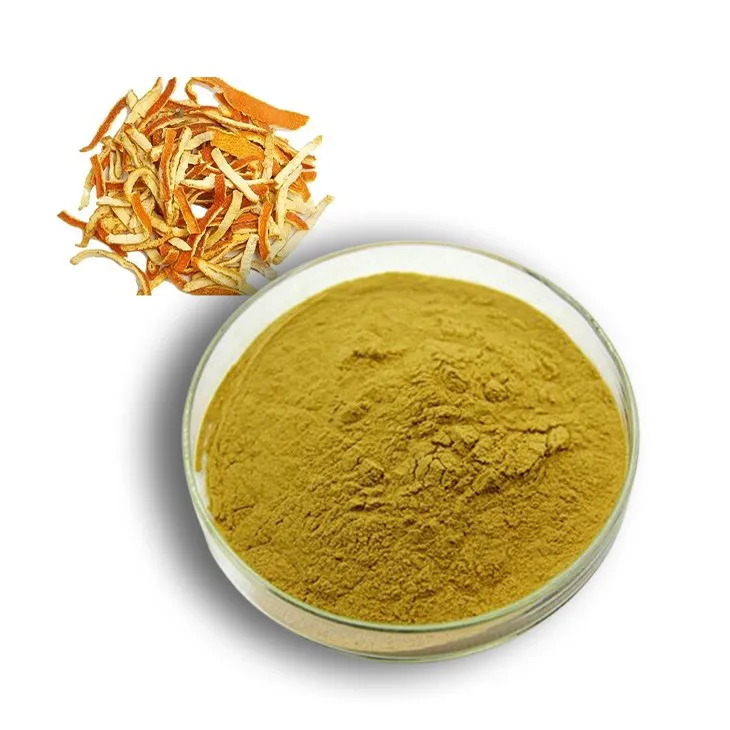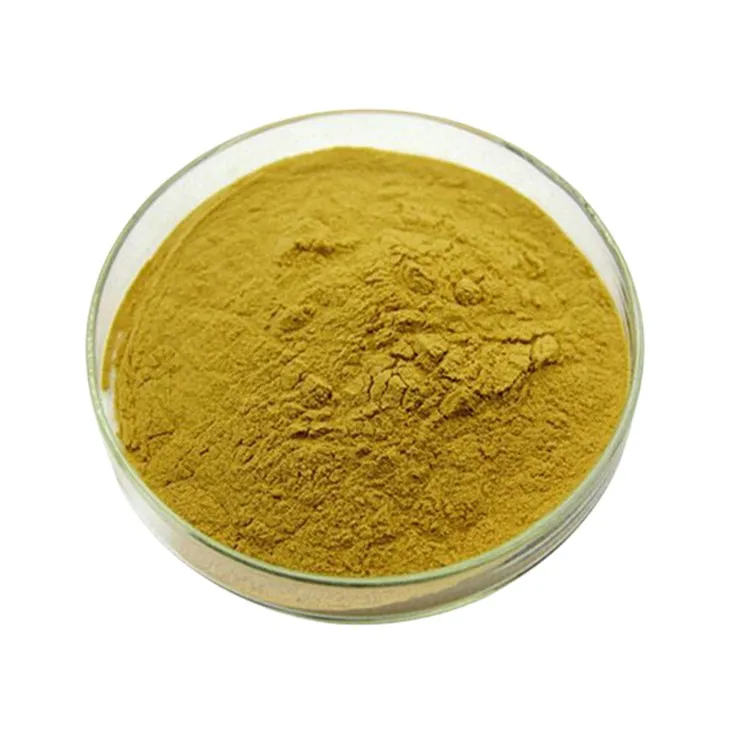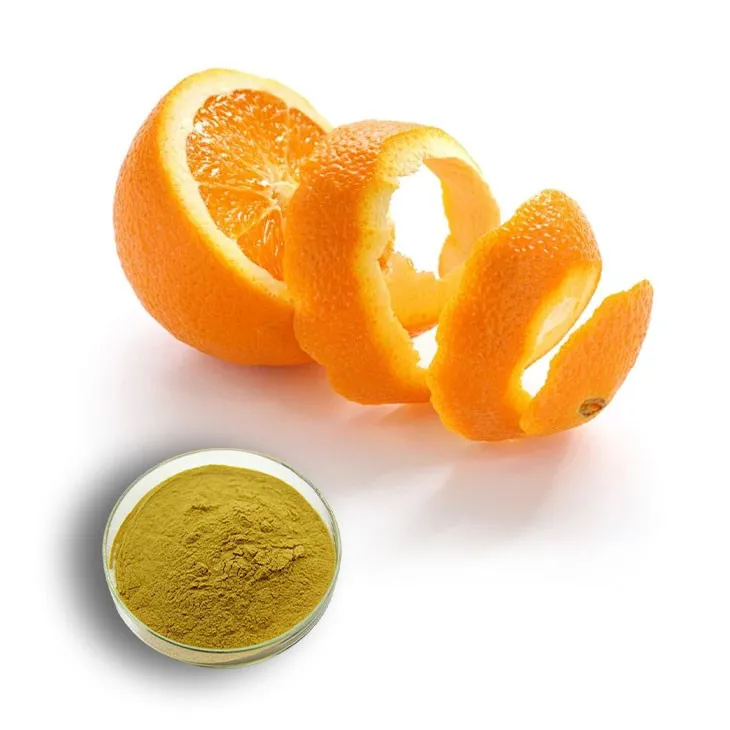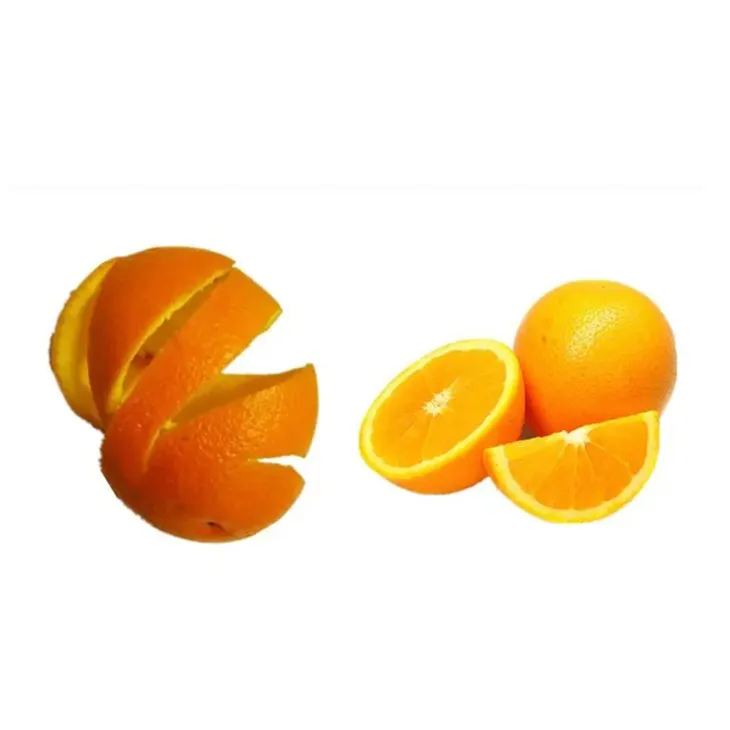- 0086-571-85302990
- sales@greenskybio.com
Hesperidin: Uses, Advantages and Manufacturing Processes
2024-11-13

1. Introduction to Hesperidin
Hesperidin, known as orange peel glycoside, is a flavonoid compound that has been the focus of significant research and practical applications in recent years. Flavonoids are a large class of polyphenolic compounds that are widely distributed in plants, and Hesperidin is one of the important representatives in citrus fruits, especially in orange peel.

2. Uses in the Pharmaceutical Industry
2.1 Antioxidant Properties
Hesperidin has strong antioxidant properties. In the body, free radicals are constantly generated during normal metabolic processes as well as due to environmental factors such as pollution, radiation, and smoking. These free radicals are highly reactive molecules that can cause damage to cells, including DNA damage, lipid peroxidation of cell membranes, and protein modification. Hesperidin can scavenge free radicals, thereby protecting cells from free - radical damage.
2.2 Anti - inflammatory Effects
It also exhibits anti - inflammatory properties. Inflammation is a complex biological response of the body to harmful stimuli, such as pathogens, damaged cells, or irritants. Chronic inflammation has been associated with numerous diseases, including cardiovascular diseases, arthritis, and certain cancers. Hesperidin can modulate the inflammatory response by interfering with the production of inflammatory mediators, such as cytokines and prostaglandins. For example, in some pre - clinical studies, hesperidin has been shown to reduce the levels of inflammatory markers in animal models of arthritis, suggesting its potential in the treatment of inflammatory joint diseases.
2.3 Cardiovascular Benefits
There are several cardiovascular benefits associated with hesperidin. It can help to lower blood pressure. Hypertension is a major risk factor for cardiovascular diseases, and hesperidin may achieve this effect by relaxing blood vessels. Additionally, it has a positive impact on blood lipid profiles. It can reduce levels of low - density lipoprotein (LDL) cholesterol, often referred to as "bad" cholesterol, and increase levels of high - density lipoprotein (HDL) cholesterol, the "good" cholesterol. This helps to maintain a healthy balance of lipids in the blood and reduces the risk of atherosclerosis, a condition characterized by the build - up of fatty plaques in the arteries.

3. Uses in the Cosmetic Field
3.1 Skin Elasticity Improvement
In the cosmetic industry, hesperidin is a valuable ingredient in skincare products. One of its main benefits is its potential to improve skin elasticity. As we age, the production of collagen and elastin in the skin decreases, leading to the loss of skin firmness and the appearance of wrinkles. Hesperidin can stimulate the synthesis of collagen and elastin in fibroblasts, the cells responsible for producing these important skin structural proteins. This helps to keep the skin more supple and elastic, reducing the signs of aging.
3.2 Antioxidant Protection for Skin
Just as in the body, the skin is also exposed to free - radical damage from environmental factors such as UV radiation, pollution, and chemicals. Hesperidin, with its antioxidant properties, can protect the skin from this damage. It can neutralize free radicals on the skin's surface and within the skin layers, preventing oxidative stress that can lead to premature aging, skin dullness, and other skin problems. By incorporating hesperidin into skincare products, manufacturers can offer consumers products that help to maintain healthy and youthful - looking skin.
3.3 Anti - inflammatory Action on Skin
Skin inflammation can be caused by a variety of factors, including allergens, irritants, and skin disorders. Hesperidin's anti - inflammatory properties can be beneficial for treating and preventing skin inflammation. It can soothe irritated skin, reduce redness, and promote the healing of inflamed skin areas. This makes it suitable for use in products designed for sensitive skin or for treating skin conditions such as eczema and dermatitis.

4. Advantages of Hesperidin
4.1 Natural Origin
One of the major advantages of hesperidin is its natural origin. Being derived from orange peel, it is a natural compound that is often preferred by consumers who are increasingly interested in natural and plant - based ingredients. Natural ingredients are generally perceived as being safer and more environmentally friendly compared to synthetic alternatives. Moreover, hesperidin is often associated with the positive qualities of citrus fruits, such as freshness and a pleasant aroma, which can add to the appeal of products containing it.
4.2 Multiple Health and Beauty Benefits
As discussed above, hesperidin offers a wide range of benefits. In the health realm, it has antioxidant, anti - inflammatory, and cardiovascular benefits. In the beauty domain, it can improve skin health in multiple ways. This versatility makes it a highly valuable compound. It can be incorporated into a variety of products, from dietary supplements aimed at promoting overall health to skincare products focused on specific skin concerns. This allows manufacturers to target different consumer needs with a single ingredient, which can be cost - effective and marketing - wise.
4.3 Compatibility with Other Ingredients
Hesperidin also has good compatibility with other ingredients. In both pharmaceutical and cosmetic formulations, it can be combined with other active ingredients without significant interference. For example, in a skincare product, it can be used in combination with vitamins, other antioxidants, and moisturizing agents. In pharmaceutical formulations, it can be combined with drugs or other bioactive compounds to enhance the overall therapeutic effect. This compatibility allows for greater flexibility in product development and formulation design.

5. Manufacturing Processes of Hesperidin
5.1 Extraction from Orange Peel
The first step in the manufacturing of hesperidin is the extraction from orange peel. Orange peels are a rich source of hesperidin. The extraction process typically involves several methods:
- Solvent Extraction: This is one of the most common methods. Organic solvents such as ethanol or methanol are often used. The orange peel is first dried and ground into a fine powder. The powder is then soaked in the solvent for a certain period of time. During this process, hesperidin dissolves in the solvent. The solvent - hesperidin mixture is then separated from the solid residue, usually by filtration or centrifugation.
- Supercritical Fluid Extraction: Supercritical carbon dioxide can also be used for extraction. This method has the advantage of being more environmentally friendly compared to traditional solvent extraction methods. In supercritical fluid extraction, carbon dioxide is brought to a supercritical state (where it has properties of both a liquid and a gas). The supercritical carbon dioxide can effectively extract hesperidin from the orange peel. After extraction, the carbon dioxide can be easily removed by reducing the pressure, leaving behind the hesperidin extract.
5.2 Purification Steps
After extraction, the hesperidin extract obtained usually contains impurities and needs to be purified to obtain high - purity hesperidin. The purification steps may include:
- Filtration and Centrifugation: These initial steps are used to remove large particles and insoluble substances from the extract. Filtration through a fine filter or centrifugation can separate the solid impurities from the liquid extract.
- Chromatographic Separation: Chromatography techniques, such as column chromatography or high - performance liquid chromatography (HPLC), are often employed for further purification. In column chromatography, the hesperidin extract is passed through a column filled with a stationary phase. Different components in the extract interact differently with the stationary phase, allowing for the separation of hesperidin from other impurities. HPLC is a more advanced and precise chromatographic method that can achieve high - resolution separation of hesperidin from closely related compounds.
- Crystallization: After chromatographic separation, crystallization can be used to obtain pure hesperidin. The hesperidin - rich solution is concentrated and then cooled slowly to allow hesperidin to crystallize out. The crystals are then separated from the mother liquor by filtration, washed, and dried to obtain the final high - purity hesperidin product.
6. Conclusion
Hesperidin is a remarkable flavonoid compound with a wide range of uses and advantages. Its applications in the pharmaceutical and cosmetic industries are based on its antioxidant, anti - inflammatory, and other beneficial properties. The manufacturing process, although complex, allows for the production of high - quality hesperidin from orange peel. As research continues, it is likely that more uses and benefits of hesperidin will be discovered, further expanding its potential in various fields.
FAQ:
What are the main uses of hesperidin?
Hesperidin has diverse uses. In the pharmaceutical industry, it is used due to its antioxidant properties which protect cells from free - radical damage. In the cosmetic field, it is added to skincare products for the potential to improve skin health like enhancing skin elasticity.
How does hesperidin protect cells?
Hesperidin has antioxidant properties. These properties enable it to counteract free - radical damage, thus protecting cells from the harmful effects of free radicals.
What is the role of hesperidin in skincare products?
In skincare products, hesperidin is added for its potential to enhance skin health. It can improve skin elasticity, which contributes to making the skin look healthier and more youthful.
What are the steps in the manufacturing process of hesperidin?
The manufacturing process of hesperidin usually involves extraction from orange peel. After extraction, purification steps are carried out to obtain high - purity hesperidin.
Why is orange peel used as the source for hesperidin?
Orange peel is used as the source for hesperidin because it contains hesperidin glycoside. By extracting from orange peel, we can obtain this flavonoid compound.
Related literature
- Hesperidin: A Review of its Pharmacological Properties and Therapeutic Applications"
- "The Role of Hesperidin in Cosmetic Science: An Overview"
- "Manufacturing and Purification of Hesperidin from Orange Peel: Current Trends"
- ▶ Hesperidin
- ▶ citrus bioflavonoids
- ▶ plant extract
- ▶ lycopene
- ▶ Diosmin
- ▶ Grape seed extract
- ▶ Sea buckthorn Juice Powder
- ▶ Beetroot powder
- ▶ Hops Extract
- ▶ Artichoke Extract
- ▶ Reishi mushroom extract
- ▶ Astaxanthin
- ▶ Green Tea Extract
- ▶ Curcumin Extract
- ▶ Horse Chestnut Extract
- ▶ Other Problems
- ▶ Boswellia Serrata Extract
- ▶ Resveratrol Extract
- ▶ Marigold Extract
- ▶ Grape Leaf Extract
- ▶ blog3
-
Cranberry Plants and Skin - care Products.
2024-11-13
-
Curcuma Longa Extract/Turmeric extract
2024-11-13
-
Reishi mushroom extract
2024-11-13
-
Astaxanthin
2024-11-13
-
Beetroot juice Powder
2024-11-13
-
Centella Asiatica Extract
2024-11-13
-
Pomegranate Extract
2024-11-13
-
Camu Camu Extract
2024-11-13
-
Clove Powder
2024-11-13
-
Mangosteen extract powder
2024-11-13
-
Calendula Extract
2024-11-13





















